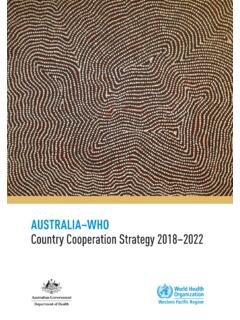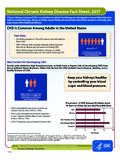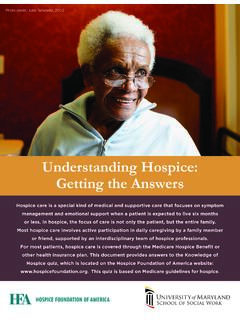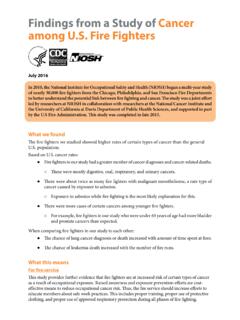Transcription of Gender Health Fact Sheet 2014 - World Health Organization
1 Gender and Health in the Western Pacific Region1 Gender and Health in the Western Pacific RegionDIFFERENCES IN THE DETERMINANTS OF Health Gender is a major determinant of Health . The distinct roles and activities of men and women in a given society, dictated by that society s Gender norms and relations, give rise to Gender differences. In many cases, these differences take the shape of Gender inequalities, which systematically determine Health risk, needs, access to Health care and Health outcomes. The Gender Inequality Index (GII) measures the loss of achievement within a country due to Gender inequality across three dimensions: reproductive Health , empowerment and labour market participation (1).
2 The lowest GII values in the Region, indicating higher levels of equality, are found in Australia ( ) and Singapore ( ), while Lao People s Democratic Republic and Papua New Guinea have higher GII values of and , suggesting less equality between men and women. In general, GII values are decreasing across most countries in the Region (Figure 1), suggesting improvements in Gender equality. Figure 1: Trends in Gender Inequality Index, selected countries, Western Pacific inequality index value2000 2001 2002 2003 2004 2005 2006 2007 2008 2009 2010 2011 2012 AustraliaCambodiaChinaFijiJapanKorea, Republic ofLao People s Democratic RepublicMalaysiaMongoliaNew ZealandPapua New GuineaPhilippinesTongaViet Nam Women s economic empowerment is associated with their improved access to monetary resources as well as exposure and social networks.
3 Economic empowerment for women is also associated with their increased decision-making power within the household, community and society at large. Labour force participation rates for women aged 15 years and above are consistently lower than those for men in every country of the Region (2) (Figure 2), with Fiji showing the largest gap, where men are 40% more likely to be involved in the workforce compared to women. These data are likely to comprise an under-measurement of women s actual participation in economic activities, much of which takes the form of home-based or informal work, which therefore renders it invisible in national policy-making. Source: Human development report 2013: the rise of the south: human progress in a diverse World .
4 New York: United Nations; 2013 ( , accessed 4 February 2014). Compared to men, women in the Region are significantly underrepresented in national parliaments (1). In 2012, Australia ( ) and New Zealand ( ) had the highest shares of women in parliament, while the Federated States of Micronesia ( ) and Nauru ( ) had the lowest (1). Even after getting elected, women often face unequal opportunity as parliaments are male-dominated institutions. The term glass ceiling is used to describe the unacknowledged barriers that prevent women s equitable advancement in the workplace. For example, in the absence of adequate role-sharing at home by men, taking time off for childbirth and domestic duties falls on women, negatively impacting their ability to move to higher positions, and limiting their influence in economic and political decision-making (3).
5 Figure 2: Adult labour force participation rates* by sex, selected countries, Western Pacific Region, 2010 Fiji Samoa MalaysiaPhilippinesSolomon IslandsJapanKorea, Republic ofTongaBrunei DarussalamSingaporeVanuatuHong Kong (China)AustraliaNew ZealandChinaMongoliaViet NamPapua New GuineaCambodiaLao People s Democratic Republic 020406080100 Labour force participation rate (%)Women*Labour force participation rate: proportion of a country s working-age population that engages in the formal labour market, either by working or actively looking for work, expressed as a percentage of the working-age population. Source: The World s women 2010: trends and statistics. New York: United Nations, 2010 ( , accessed 4 February 2014).Men1 Gender and Health in the Western Pacific Region2 In the Region, women s average earnings are usually lower than those of men, even within the same sector or for similar work (2).
6 This, combined with disadvantages in education, employment and the double burden of work (both unpaid domestic tasks and reproductive activities), makes women in the Region particularly vulnerable to both poverty and poorer Health outcomes. Table 1: Number of physicians, by sex, selected countries, Western Pacific Region, 2010 2011 CountryYearMenWomenSource: Health Information and Intelligence Platform (HIIP) [online database]. Manila: World Health Organization Regional Office for the Western Pacific; 2013 ( , accessed 7 July 2014).CambodiaRepublic of KoreaMarshall Islands2011201020102 60078 600870023 00024 Women s economic activities are often characterized by informal sector or more insecure forms of work, which lack social protection and benefits such as pension or insurance.
7 This increases their barriers to access to Health care. The Gender -based division of labour might also lead to different Health risk exposures for women and men. Within the Health workforce, women tend to be concentrated in professions with lower perceived occupational prestige and skills, such as nursing, and constitute a smaller proportion of physicians than men. For example, in Cambodia, there are 2600 male physicians compared to 700 (21%) female physicians (Table 1). A similar distribution is also seen in the Republic of Korea and Marshall Islands, where female physicians comprise 23% and 25%, respectively, of the total (4). In settings where women prefer to consult female Health providers, as is the case in several countries of the Region, it is likely that a lack of female providers may influence women s willingness to seek care.
8 Education, specifically Health -related knowledge and awareness, leads to better nutrition and child-feeding practices, improved sanitation, and increased use of maternal and child Health services. In the Region, the gap is small between boys and girls educational enrolment rates in primary and secondary schools (5). However, the positive influence of education on Health is unevenly distributed in the Region, as literacy rates vary across countries and between men and women within countries (5) (Table 2). Substantial differences in men s and women s literacy rates exist in Lao People s Democratic Republic ( for men and for women) and Papua New Guinea ( for men and for women).
9 Table 2: Adult literacy rates by sex, selected countries, Western Pacific Region, 2005 2008 CountryYearMenWomenAdult (15+ years) literacy rate (%)Percentage DifferenceBrunei DarussalamCambodiaChinaLao People s Democratic RepublicMacao (China)MalaysiaMongoliaPapua New GuineaPhilippinesSamoaSingaporeTongaVanu atuViet : United Nations Educational, Scientific and Cultural Organization [online database]. Canada: UNESCO Institute for Statistics; 2014 ( , accessed 4 February 2014). Across the Region, women tend to have a longer life expectancy at birth than men (Figure 3). Although women in the Region typically live longer (a phenomenon known as the feminization of ageing ), they are likely to have more illness and disability than men (6).
10 This, combined with their typically lower rates of education, formal employment and related social security, makes it more likely that women will face poverty or deprivation in their old age. In the Region, sex ratios (proportion of men to women in the population) across age groups are typically favourable to men until the age of 60 years, after which the ratios reverse and become favourable to women, as women typically live longer than men (Figure 4) (7). Sex-selective abortions and neglect of the girl child may explain the larger ratio of boys to girls in the younger age groups (despite boys having a higher under-5 mortality rate). Son preference is evident in China where the sex ratio of boys to girls at birth was estimated to be for 2005 2010 (8).








